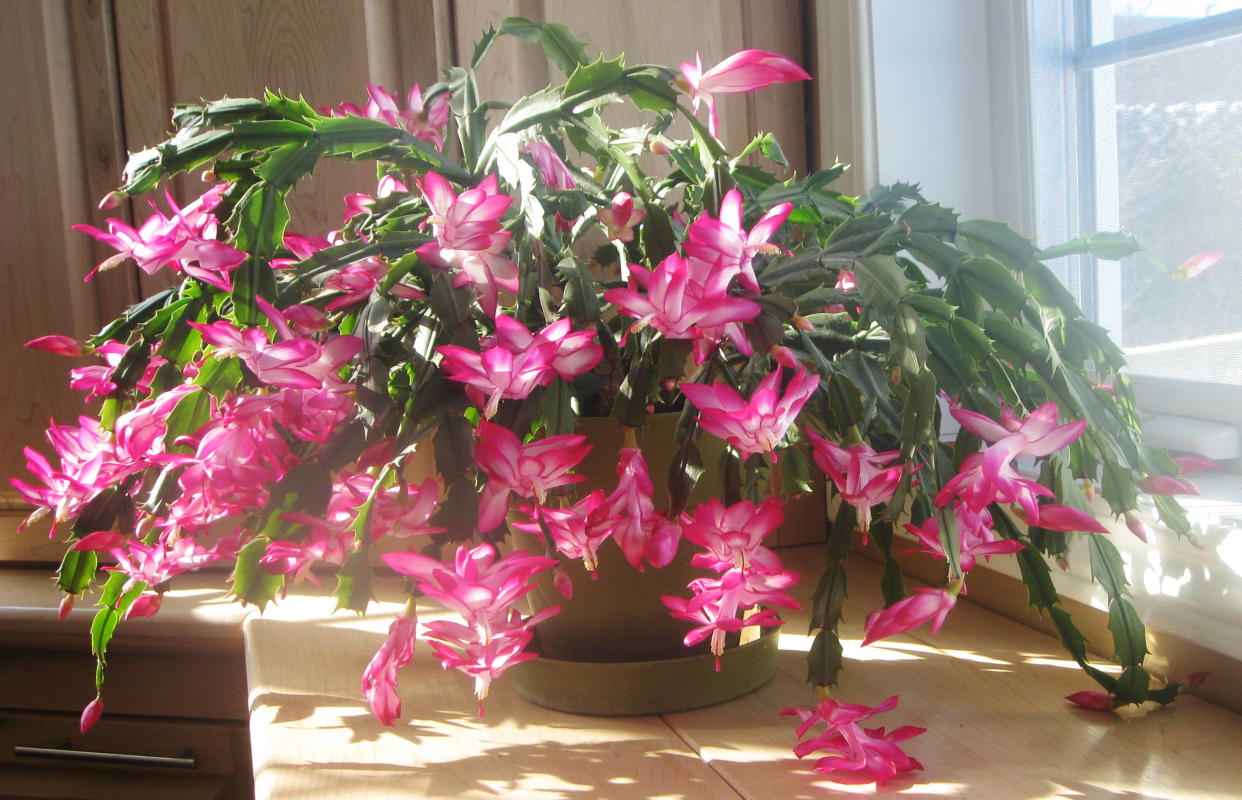How to care for holiday cactuses and other indoor plants

Do you ever wonder why your Christmas cactus blooms in November? The reason for the timing being off is simple. You don’t have a Christmas cactus. You have a Thanksgiving cactus. Christmas cactus and Thanksgiving cactus are two very similar but different species of plant.
Known as the holiday cactuses, there are actually three types. There is the Thanksgiving cactus (Schlumbergera truncata) and Christmas cactus (Schlumbergera x buckleyi). Also included is the Easter cactus (Rhipsalidopsis gaertnerrii) which blooms in the spring.
The difference between the three cactuses is found in the shape of the leaves. The Thanksgiving cactus has very pointed, claw-shaped projections on the edges of the leaf. The Christmas cactus has leaf projections that are more scalloped, or teardrop-shaped. The Easter cactus has very rounded edges which are centralized on the leaf.
These plants, native to Brazil, grow where the days are short and the temperatures are cool ahead of the time when they bloom. If you have one of these plants and it has been outdoors, or growing in a bright room, you need to place it into a cool dark space to get it to set buds. This should be done six weeks ahead of the holiday.
Holiday cactuses are relatively easy to grow. They can be pretty carefree, with the most common problem being overwatering. When cared for properly, they can be handed down from one generation to another. There are records of some living more than 100 years.
This is a great time of the year to consider adopting some tropical plants to the inside of your home. I do not call them "houseplants" because as my dad used to say, "There are no houseplants. Every plant wants to be living outside." What he meant is the environment inside of most of our homes is not conducive for plants to thrive. The key to success is to use plants that are most tolerant of the adverse growing conditions inside of a house.
At Bloomin, we have two employees who are houseplant lovers, Holly Short and Bria Bachman. I asked them to give me recommendations of their two favorite plants for indoors.
Holly’s first choice is the Snake Plant (Dracaena trifasciata). She recommends it because it is an easy plant for beginners. It is very low maintenance, requiring water as little as once a month. It will grow in low light and also tolerate bright light. You do want to avoid direct sunlight.
Her second choice is the many varieties of Philodendron. Her two favorite varieties are Brasil, Moonlight, and Prince of Orange. These varieties all have very colorful foliage. They do need bright light for the best color. These are also fast growers.
Bria’s first choice is the Pothos. They have a vining habit and can be grown in a hanging basket. They can also be trained to grow on a trellis or a moss pole. These plants are also great for beginners. They tolerate most lighting conditions. They tolerate dry soil and like all tropical plants, do not like to be overwatered. Best of all, Bria refers to these as the "gift that keeps on giving" because they are easily propagated and can be gifted to other "plant parents."
Her second choice is the Peace Lily (Spathiphyllum). She likes these for their upright growth habit. With the right amount of light, they put out a "gorgeous white bloom." They are tolerant of low-light spaces but may not bloom there. One of her favorite traits is that the Peace Lily will "talk" to you. This is in reference to the leaves wilting when they are thirsty.
This article originally appeared on Cincinnati Enquirer: How to care for holiday cactuses and other indoor plants

